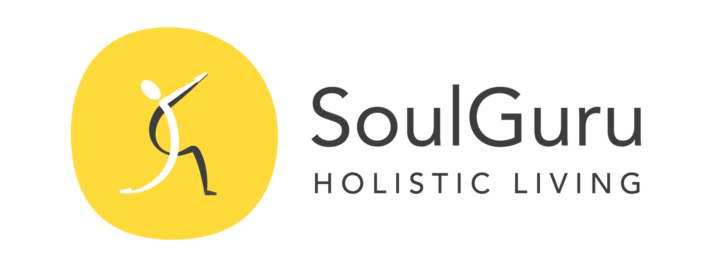Pranayama is one of the eight stages of Yoga, in which a person consciously prolongs inhalation, retention, and exhalation to regulate the flow of energy throughout his body. With the help of this process, a person manages to develop strong will-power, a steady mind, and sound judgment.
Pranayama, the art of breathing
While practicing pranayama around 3000 cubic centimeters of air is absorbed by a human body during deep inhalation while the intake of air in normal inhalation is only 500 cubic centimeters. Pranayama, thus, helps to increase the lung capacity and allows your body to achieve optimum ventilation. It also helps to get rid of toxins from your body. Did you know that about 70 percent of toxins are released through the process of exhalation? Pranayama makes this system of detoxification efficient while improving the circulatory system, digestion, and elimination of waste.
Wait a minute, did you just try controlling the intake and outflow of air in your body? Well, you should begin practicing pranayama only with the help of an instructor. Pranayama is an intricate art form that requires proper guidance in the initial stage.
It is clearly mentioned in many yoga books, including Light on Pranayama by B.K.S. Iyengar, that an improper practice may lead a person to several health problems, including hypertension, asthma, cough, pain in the eyes, ears, and heart, the hardness of the bronchioles and dryness of the tongue.
Here’s how the process of pranayama is explained in the second chapter of a classic Sanskrit manual on yoga by Svāmi Svātmārāma called Hatha Yoga Pradipika:
“Being firmly established in the practice of asanas, with his sense under control, the yogi should practice pranayama as taught by his guru, observing moderate and nutritious diet. When the breath is irregular, the mind wavers; when the breath is steady, so is the mind. To attain steadiness, the yogi should restrain his breath.”
10 Things You Must Know Before You Start Practising Pranayama
So, let’s look at some of the most important things to keep in mind while practicing pranayama:
Timing of Practise
You must practice pranayama for at least 15 minutes a day at fixed timings, preferably before the sunrise or after the sunset. It is mainly because industrial pollutions like noise could create disturbance, restlessness, and anger and you may struggle to concentrate on your breathing process.
According to experts, early morning is best for practicing pranayama, as your body and brain remain fresh in the early hours of the day. But if you find it difficult to take some time out of your schedule for practice in the morning, you can do it after sunset.
Place and posture
You must choose a clean, airy and secluded place to practice pranayama and try to sit straight with your back erect from the back of your spine to the neck.
Although the best way to practice pranayama is by sitting on the floor on a mat in a padmasana, sidhasana or sukhasana, you can also sit on a chair. But make sure to keep your spine and neck erect since a bad posture may lead to low endurance and shallow breathing.
Practice Pranayama on an empty stomach
You must keep an interval of four to six hours between pranayama and meals. If you feel hungry, you can have a cup of milk or tea. It is also important to keep in mind that you should not consume anything for half an hour after practicing pranayama.
Practice with an empty bladder
It is important to empty the bladder and bowels before you start practicing pranayama. It does not mean that constipated people cannot practice pranayama. They can do it as the bowels will not be damaged in a similar way bladder does.
Do not try out asanas after pranayama
You should not practice asanas after pranayama. Although there is no harm in practicing pranayama after asanas. Also, before starting with pranayama make sure that your body is ready for the practice. Yoga asanas help to open up the blocked channels in the body and lay the foundation for good pranayama practice.
Keep your tongue and throat passive and also always exhale before starting pranayama
You must not stiffen your tongue and throat while practicing pranayama. You should also not try to press your tongue against the palate or the teeth. All stages of all pranayamas begin with exhalation to expel whatever tidal air remains in the lungs.
Do not tighten your arms
You must keep your arms passive or else you may experience numbness, pins, and needles. You could experience this in the first few days of your practice, but there is nothing to panic. It may happen because of an unaccustomed posture. It will gradually disappear as you get established in the practice.
Do not swallow saliva before inhalation and during retention
You might experience a flow of saliva while practicing pranayama. You can swallow it after exhalation before breathing in fresh air. Never swallow the saliva while breathing in the air.
Relax for sometime after finishing your practice
You should not undertake any vigorous physical activities after a session of pranayama. Rather relax in savasana for some time before embarking on your day.
Pregnant women and children below the age of 18 years should not attempt retention
Although it not harmful to practice pranayama during pregnancy, it is not advisable to hold your breath for a long time during this period. Pranayamas like Bhastrika and Kapalbhati should not be practiced during pregnancy. Some of the pranayamas that are safe and beneficial for pregnant women include Surya bhedana, Chandra bhedana, Nadi Shodhana, and Ujjayi.
Similarly, children below the age of 18 years should not practice retention of breath as it would expedite aging.
